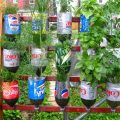Top Strategies for Growing Fruit on Your Balcony: Expert Tips for Success
Growing fruit on your balcony can transform your urban space into a productive and relaxing oasis. Whether you’re a beginner gardener or a seasoned enthusiast, cultivating fruit in small spaces requires careful planning, the right selection of plants, and ongoing care. This article provides a comprehensive guide, covering everything from plant selection to harvesting, ensuring your balcony garden thrives. Read on to discover essential tips for growing fruit on your balcony, overcoming common challenges, and maximizing your yield.
Key Concepts in Balcony Fruit Gardening
- Space optimization: Use vertical gardening techniques to maximize the limited space on your balcony.
- Container gardening: Understanding the importance of choosing the right pots and containers for different types of fruit plants.
- Microclimates: Recognizing how sunlight exposure, wind, and temperature variations affect plant growth on a balcony.
- Plant selection: Choosing the right fruit varieties that thrive in containers and limited sunlight.
Historical Context: Balcony Gardening’s Rise in Urban Areas
The concept of balcony gardening has evolved over the past few decades, spurred by urbanization and the desire for greener spaces in city environments. The tradition of small-space gardening has roots in ancient cities like Babylon, where vertical gardens flourished. In modern times, balcony gardening gained popularity as people sought ways to connect with nature despite limited space. Today, it’s a common practice for urban dwellers who want fresh produce at their fingertips.
Current State of Balcony Fruit Gardening
With innovations in gardening tools, soil blends, and hybrid plants, balcony gardening is more accessible than ever. From dwarf fruit trees to hanging planters, there’s an abundance of options for gardeners who want to grow fruit in tight spaces. However, challenges such as limited light, unpredictable weather, and space constraints persist, requiring smart strategies for success.
Practical Applications: How to Grow Fruit on Your Balcony
- Container selection: Choose large pots for trees and smaller containers for bushes or vines. Ensure they have adequate drainage to prevent root rot.
- Soil preparation: Use a high-quality, lightweight potting mix to encourage root growth and provide nutrients.
- Watering: Be mindful of watering schedules. Balcony plants often dry out faster due to wind exposure.
- Sunlight: Most fruit plants need at least 6 hours of sunlight. Position your plants accordingly, or use grow lights if needed.
- Pollination: Some fruit plants require pollination assistance. Hand-pollinate flowers or grow plants that don’t need cross-pollination.
Case Studies: Successful Balcony Fruit Gardens
| Plant Type | Conditions | Outcome |
|---|---|---|
| Dwarf Lemon Tree | South-facing balcony, 6+ hours of sun, large container | Produces fruit year-round; requires frequent watering |
| Strawberries | Partial sun, hanging basket, weekly feeding | Produced fruit over 4 months; minimal space used |
| Tomatoes (technically a fruit) | 5 hours of sun, medium container, trellis for support | Produced a bumper crop; needed staking and regular pruning |
Stakeholder Analysis: Who Benefits from Balcony Fruit Gardening?
Balcony fruit gardening impacts various stakeholders, from individuals to communities:
- Urban dwellers: Provides fresh, homegrown fruit and a connection to nature.
- Local ecosystems: Supports biodiversity by attracting pollinators like bees and butterflies.
- Environmental advocates: Promotes sustainable living by reducing reliance on grocery store supply chains.
- Urban planners: Balcony gardens can contribute to urban green spaces, improving air quality and reducing urban heat islands.
Implementation Guidelines for Balcony Fruit Gardening
- Assess your space: Measure the size of your balcony, check sunlight exposure, and consider wind patterns.
- Select the right plants: Choose fruit varieties that suit your balcony’s environment (e.g., shade-tolerant plants if sunlight is limited).
- Prepare containers: Ensure pots are large enough and have drainage holes. Use lightweight soil to reduce the load on your balcony structure.
- Water and fertilize: Set up a regular watering and feeding schedule. Consider a drip irrigation system for consistent moisture.
- Monitor plant health: Watch for signs of stress such as yellowing leaves, root rot, or insect infestations.
Ethical Considerations in Balcony Gardening
Balcony gardening may seem environmentally friendly, but it also raises ethical questions. Sourcing plants sustainably is key, as some nurseries rely on harmful pesticides or unsustainable practices. Additionally, using non-recyclable plastic containers can contribute to waste, so consider biodegradable or recyclable pots. Finally, over-reliance on water and fertilizer may strain local resources, especially in drought-prone areas.
Limitations and Future Research
Despite its benefits, balcony fruit gardening has limitations. For one, space constraints limit the variety and quantity of fruit that can be grown. Furthermore, balconies exposed to high winds or with poor sunlight may not support certain fruit species. Future research could explore technological innovations like hydroponics or aquaponics to improve yield in small spaces. Advances in plant genetics may also result in more compact fruit varieties designed specifically for urban gardeners.
Expert Commentary
Experts agree that balcony fruit gardening offers an exciting opportunity for urban dwellers to grow their own food while reconnecting with nature. However, success depends heavily on the gardener’s ability to adapt to space constraints and microclimates. The rise of vertical gardening, container-friendly fruit plants, and self-watering pots has made balcony gardening more feasible. Nonetheless, gardeners should remain mindful of environmental impacts, especially regarding water usage and waste management.


